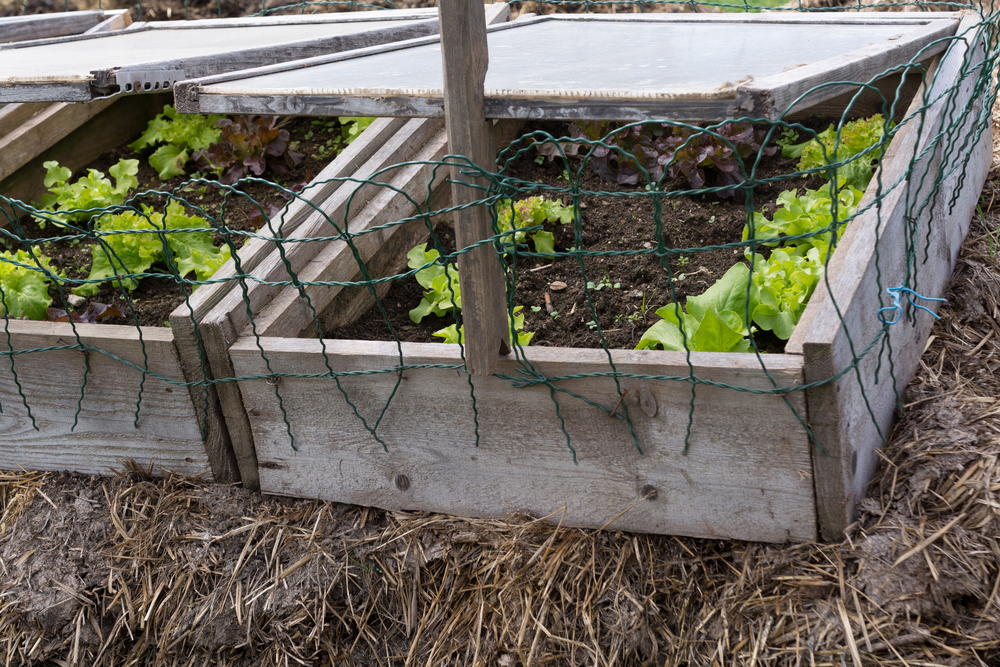Three easy steps to protecting your crops from frost

Cold frames are season-extending covers constructed over vegetable beds to keep the frost off. Like a miniature, temporary greenhouse, they are employed in early spring to create a warm space for seedlings to get a head start on the growing season, or during the fall to extend the growing season for cold-hardy crops, which include most greens, herbs and root vegetables. In mild winter climates, it’s possible to keep these vegetables going until the following spring with a cold frame.
A cold frame consists of little more than a translucent cover and a structure to support it. The key is that it must be fairly airtight to keep the cold out. When the sun hits it during the day, it heats up inside (to a temperature significantly higher than the outside air) and then holds some of that warmth through the night (typically keeping the bed a few degrees warmer than the outside air).
You can build a beautiful cold frame with glass and mitered wood. This takes skill, time, and a not-insignificant financial investment. Or you can follow the instructions below and be done with it in 15 minutes or so.
Materials
The following supplies will cover a bed four by eight feet in size
Five pieces of ¾-inch-by-10-feet PVC pipe
10 pieces of ½-inch-by-1-foot rebar
12-foot-by-16-foot piece of clear plastic sheeting
Step One
Using a hammer, pound a piece of rebar halfway into the ground at each of the four corners of the bed and every two feet along the long sides of the bed.
Step Two
Slide one end of a piece of PVC onto the rebar stake at one of the corners and bend it over the bed to slide the other end onto the rebar stake at the adjacent corner. Repeat this process along the length of the bed to form a series of five parallel hoops.
Step Three
Drape the plastic over the PVC frame so that it is touching the ground on all four sides. Secure the plastic to the ground by weighing down the edges with bricks, rocks, logs, two-by-fours or any other small, heavy objects you have on hand. Make sure the plastic is stretched as tautly as possible over the frame.
It would be nice if you had a photo of the cold frame constructed with the rebar. As they say, a picture is worth a thousand rebars!
I don’t think this would look like the one in the picture. Kind of confusing.
Brian does not know the difference between a cold frame and a hoop house. Makes any information on modernfarmer suspect. Too bad!
Seems like a decent design except for the part where the plastic sheet is simply secured by bricks; I think the excess sheet material will collect rainwater and provide an environment for mosquitoes to breed. If the excess sheet could be covered by dirt, it might help combat that.
This is not a cold frame in the instructions. Thats a hoop house. The photo is a cold frame.
you have your wording wrong – the directions listed are for a hoop tunnel to extend the growing season. A cold frame is used at the beginning of the season to give seedlings a head start. I’ve made mini-temporary hoop structures as directed below to extend winter crops like kale, spinach, chard, etc. They work well, are easy and inexpensive to construct, and easy to remove when finished with them.
Hello
I’m a fan in Oxfordshire England. What is rebar? What would be an equivalent?
Thank you ?